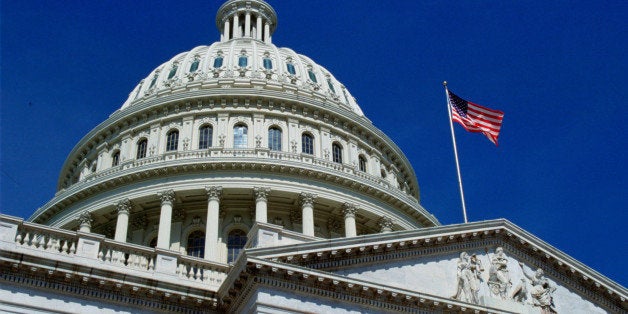
It's not often that an 82-year-old law, repealed 16 years ago, receives almost as much airtime as some of the candidates at a American presidential primary debate. Glass-Steagall Banking Act of 1933 -- repealed in 1999 -- prohibited deposit-taking banks from engaging in securities underwriting, but it has come to stand more broadly for various laws that effected the separation of commercial banks from investment banks and insurance companies. At the first Democratic primary debate, the candidates went back and forth about whether Glass-Steagall's repeal contributed to the financial crisis. Unfortunately, none of the candidates was able to articulate exactly why Glass-Steagall was important or the connection between Glass-Steagall and the financial crisis.
Contrary to conventional wisdom, the importance of Glass-Steagall was not as a financial firewall between speculative investment activities and safe deposits. Glass-Steagall never prevented deposits from being put at risk, as bank loans can be every bit as risky as securities or derivatives. Instead, Glass-Steagall's importance was as a political firewall that kept the different sectors of the financial services industry from uniting in their lobbying efforts and undermining financial regulation. Glass-Steagall was the financial regulatory version of Sun Tsu's maxim: divide and conquer.
By separating investment banking from commercial banking from insurance, Glass-Steagall ensured that there would be turf battles between different sectors of the financial services industry every time a new product was developed. Glass-Steagall also meant that members of Congress could afford to alienate one industry sector, as they could still look to the other industry sectors for campaign contributions. If the money market funds paid for a mercenary think tanker to write a policy paper urging their deregulation, the commercial banks could counter by financing their own policy paper. And any attempt to deregulate an industry sector was inevitably met with a well-heeled litigation challenge from the other sectors. Glass-Steagall stymied deregulation by pitting different financial industry sectors against each other.
Skillful politicians were even able to play the industry sectors off against each other to advance regulation. For example, in 1938, SEC Chairman William O. Douglas was able to enlist commercial banks to support what became the Trust Indenture Act -- the major securities law protecting bondholders -- by cutting a deal which kept investment banks out of the bond trustee business. More recently, consider the fight over the 2010 Durbin Interchange Amendment that regulates debit card swipe fees paid by merchants. This was an equally matched heavyweight bout of big banks versus large retailers, JPMorgan versus Wal-Mart. When faced with a well-financed opposition, the banks lost. Contrast this to the way the banks pushed through the 2005 bankruptcy law amendments against the opposition of consumer groups and law professors (some of whom have gone on to do other things).
The demise of Glass-Steagall did not come in one fell swoop, but when the Act was finally repealed in 1999, the stage was set for a massive deregulation of the financial services industry that led to the 2008 debacle. The end of Glass-Steagall meant that formerly adversarial financial firms were able to unite as affiliated subsidiaries of "financial holding companies." The different financial services industry trade associations stopped fighting each other and banded together to push through some of the major deregulatory legislation that contributed to the 2008 meltdown, such as the 2000 Commodities Futures Modernization Act, which prohibited regulation of credit derivatives, and the 2005 bankruptcy amendments, which encouraged the use of repo funding for mortgages.
Until the political importance of Glass-Steagall is recognized, financial reform is doomed. Captured regulators will implement milquetoast versions of reform laws, and Congress will entertain amendments to slowly repeal the reforms. This is the critical shortcoming of the Volcker Rule in the Dodd-Frank Act, which prohibits insured depositaries from undertaking certain speculative activities. The Volcker Rule accomplishes a similar financial result to Glass-Steagall, but because it lacks the political effect of Glass-Steagall, the Volcker Rule has already been undermined through bank lobbying regarding its regulatory implementation.
Ultimately, financial regulation is just not that complex technically, even if has a lot of technical rules. (It's the capital, stupid!) The problem we face in keeping the financial services industry from wreaking havoc on the real economy is not technical, but political. If you're concerned about income inequality and the way the financial system exacerbates it, don't look to technical fixes like the Volcker Rule to change things. Instead, look more closely at things like the Citizens United decision, cabinet agency nominations and other personnel appointments, and the scourge of undisclosed, paid-for policy papers. That's where the issue will be decided. Until we address the politics of financial regulation, we're going to keep playing the same game of crisis, regulatory response, and inevitable deregulation. If we get the politics right, the right regulation will follow.
